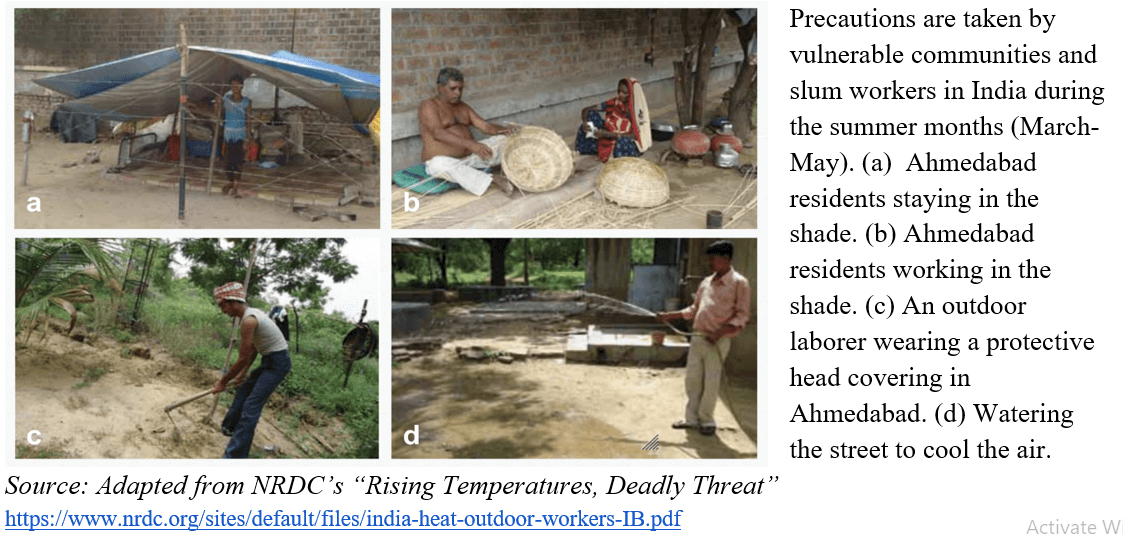
By Dr. Vijay Limaye, Senior Scientist and Director, Applied Research Initiatives, Science Office & International, Natural Resources Defense Council (NRDC)
NRDC India advises and provides solutions to organisations that are seeking to advance national and global climate goals through community-based solutions that prioritise public health and equity, create jobs, and boost resilience. Through our work with local officials and community partners on city-level Heat Action Plans (HAPs), NRDC works to improve preparedness and reduce the health harms of extreme heat in India. Below, we share three lessons from our work in this area:
Lesson 1: Heat Interventions Should Prioritise Vulnerable Populations
While the HAP approach has expanded rapidly across India, these plans can still be strengthened to better protect human health. In a recent assessment, about 95% of Indian HAPs analysed lacked vulnerability assessments that could help authorities to efficiently allocate limited resources. Such assessments typically include consideration of three pillars: heat exposures, population vulnerabilities to heat that elevate risks in certain groups, and adaptive capacity resources that individuals and communities can access to reduce risks. Mapping of how these three factors overlap, for example as developed by NRDC India and Mahila Housing Trust (MHT) in Jodhpur’s HAP, can illuminate compounding risks and inform interventions at the ward-level, providing communities and policymakers with a clearer picture of the problem and ways to address it.
Lesson 2: Data and Evidence Can Guide Effective Interventions
Heat preparedness actions are urgently needed, as are efforts to evaluate how these actions are benefiting public health. Ahmedabad’s HAP, the first launched in South Asia, is one of just a handful of heat plans worldwide to be evaluated for health effects. By comparing citywide summertime death rates before and after the HAP was implemented in 2013, a team of Indian and American researchers found that the plan helped Ahmedabad to achieve a reduced death rate on hot days, with more than 1100 deaths avoided each year post-HAP launch. Experts also found that mortality rates on the hottest days (at or above 45°C daily maximum temperature) dropped by 27% after the HAP was implemented, relative to pre-HAP years. With many more adaptation projects now being launched in India, the US, and internationally, attention to monitoring and evaluation is crucial.
Lesson 3: Careful Planning and Governance Mechanisms Are Crucial
As the impacts of climate change become more obvious on the ground, stronger coordination amongst government, civil society, and academics is needed to strengthen planning, preparedness, and governance. To advance this dialogue, India’s National Disaster Management Authority (NDMA) has led annual discussions on improving preparedness ahead of the most intense phase of the annual heat season. In addition to these local efforts, effective HAP implementation also requires local and state governments to actively engage in dialogue with NDMA to identify, refine, and scale up best practices. The discussions facilitated by NDMA’s convenings help to frame the urgent work of heat season readiness within the larger challenge of accelerating action to deliver improved heat protections for vulnerable populations in India over the long term.
Disclaimer: The views expressed in this piece are those of the author/s and do not necessarily reflect the views or policies of AIDMI.